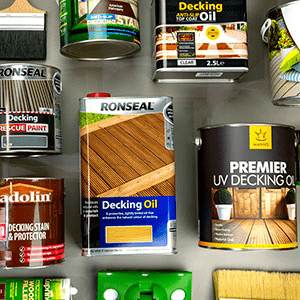Wood Stripper & Remover FAQ's
What is the best way to strip paint from wood?
We are often asked questions about the best way to strip paint and varnish from wood. Luckily there are some great products available today that make it a breeze. But there are 3 approaches that you might take. Sanding, a hot air gun or some form of stripper. But there are things that you need to know in order to make the right choice. For example, a hot air gun is not good for removing varnish as it will simply melt the varnish and make it gooey.
We've put together a very comprehensive blog post which provides all the information you need to make the right paint stripping choice for your project.
What is the best paint stripping product?
There is no straight answer as to which is the best paint stripping product. This is because paints and varnishes are made to different formulations by the various manufacturers and where one paint stripper works well on one type of paint, it might not perform as well on another. For this we recommend buying a sample or the smallest tin size first to test the effectiveness of the stripper on the paint or varnish to be removed.
Products that have repeat positive feed back are Paint Panther Paint and Varnish Remover, PeelAway 1 and PeelAway 7 Paint Removers. Paint panther is more suited to normal day to day paint stripping whereas the PeelAway products are great for removing and restoring objects that originally had a highly decorated surface that has been infilled by paint over the years. The PeelAway paint removal system is especially useful for removing paint from ornate and highly detailed fireplaces, furniture, plaster coving, cornices and ceiling roses.
Help needed on how to remove paint from brick walls?
Removing paint from brick walls can be tricky because of the textured surface. For thick, multiple layers of paint, our first option would be the Peelaway removal system. We recommend trying the PeelAway 1 and 7 Sample Twin Pack first to find out which product is the most effective on your paint type.You could try a small test area using a conventional paint stripper such as Paint Panther, paint and varnish remover then rinsing off the treated area with a jet washer. It's worth noting that the pressure shouldn't be too high as to splash the stripper over other areas and plants. care should also be taken not to wash out any loose render between the bricks.
Can I use a paint stripper to remove a wood stain?
This depends on the type of wood stain used. Some wood stains are simply colouring liquids that colour the surface of the wood by soaking in to and staining the surface grain. These types of wood stains require a top coat of varnish, wax or oil to seal in and protect the colour and can be removed by scrubbing the surface with the relevant thinner. E.g. Water or white spirits. Sanding is also effective (or both).
Many products labelled as 'wood stains' in DIY chains are coloured varnishes, they are a sealer mixed with pigments that both colour and protect the wood. These types of wood stains can be removed with a paint and varnish remover.
How do I remove Creocote from my wooden bench?
Unfortunately this will be quite difficult to remove as the Creocote dries by absorption into the wood, rather than by forming a film, so may transfer for some time.
If the application was recent, it may be possible to remove the worst by wiping down thoroughly with white spirit and plenty of rags. However, the colour will not be removed and there will still be some risk of transference.
However, once the bench has thoroughly dried then it should be possible to seal in the remaining Creocote with a solvent-based product such as Barrettine Premier Wood Preserver in Clear or Coloured. Barrettine Decking Oil in Clear would also be suitable, but the coloured versions of this would not be.
I have mahogany Ercol coffee tables, book case and welsh dresser that I would like to strip and refresh. What is best to use?
The key to this project is knowing what type of finish is currently on these pieces of furniture
If it's a varnish or paint you are looking to remove then consider Paint Panther Paint and Varnish Remover from Barrettine. It's a highly effective paint and varnish remover that works in just minutes and removes most types of paint and varnish.
We always recommend doing a test area somewhere inconspicuous first to ensure there is no reaction or damage to the wood, before starting your project. This should be done on each piece of furniture.
If the furniture has been waxed then a wax and polish remover such as Woodleys Wax and Polish Remover should be used. These products effectively strip off old or worn waxes or polishes to expose the bare wood underneath.
Alternatively, these pieces of furniture can be sanded but this can be messy and if coated with a pre 1970's paint, potentially dangerous. A light sanding can be done once the furniture has been stripped if required and prior to refinishing.
In terms of refinishing once stripped, this depends on the type of finish desired. We supply a wide range of wood oils, waxes, paints and varnishes that could be used to refinish these items. To get a better idea of the type of finish you would like and so that we can recommend some suitable products, please contact us so that one of our trained in-house experts can help you with this project.
Can I use a paint stripper to remove a wax finish?
We recommend the use of a dedicated wax and polish remover along with an abrasive scotch pad and lots of clean, lint free cloth such as an old cotton T-shirt or bedding to remove wax.
Paint and Varnish Remover related blog posts
Disclaimer: Whilst every attempt has been made to provide product information that is as accurate as possible, it's important to clarify that trees and the wood that they produce can be affected by many factors. For example, the same species of tree grown in the same wood, even in close proximity, will be affected by age along with the amount of sunlight and water they receive. Other naturally occurring biological and environmental factors will also influence the density and grain of the wood as well as the moisture and oil content of the timber. No two trees are the same, meaning each piece of wood has the potential to look and react differently to the same wood finish. For example, product adhesion, colour variations, absorption rates and sheen levels. It is for this reason that we always strongly recommend carrying out test areas before starting any project


